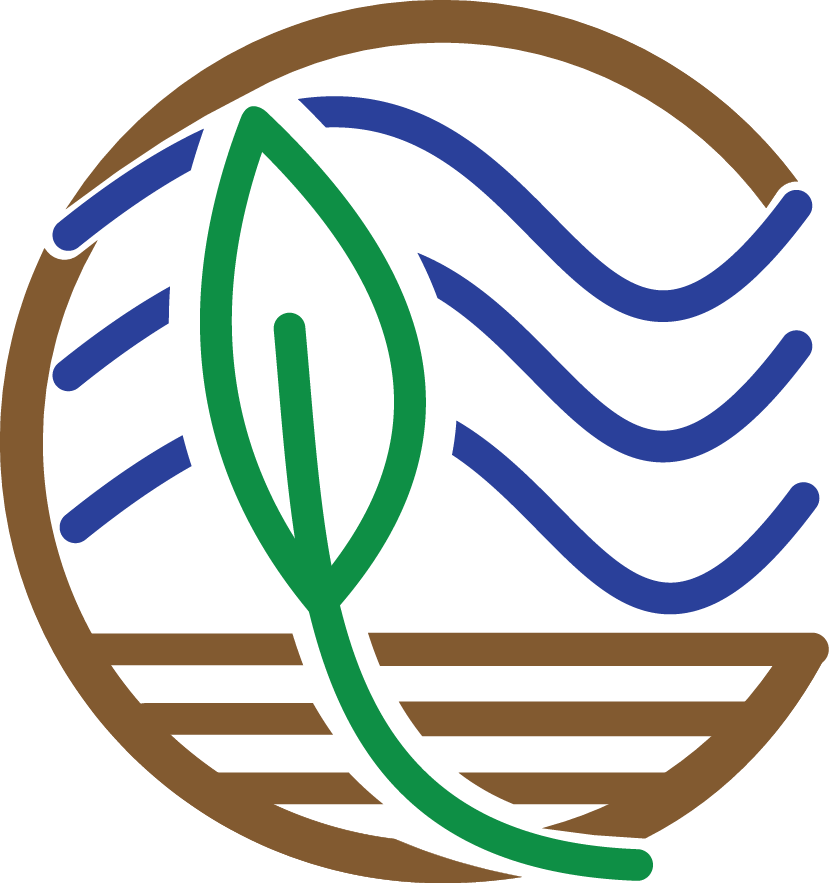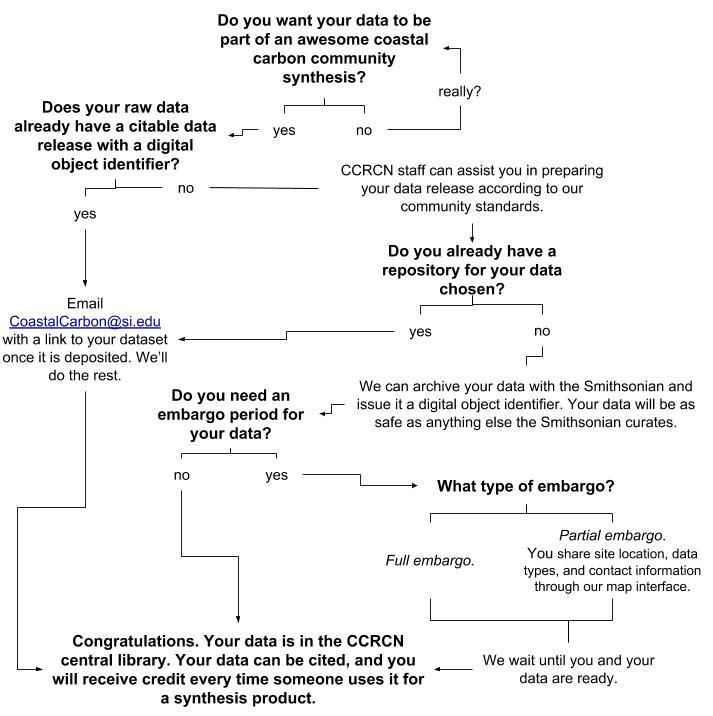Submit Data / Join the Network
Data Submission and Joining the Network
Submit Your Data to the Coastal Carbon Data Library and Atlas
We welcome contributions of carbon data from coastal wetland habitats that experience tidal influence (or are anticipated to in the future). We accept data that is published or unpublished as long as the original measurements are available. If you are interested in contributing data, please email CoastalCarbon@si.edu and CCN personnel will assist you in the process. We also encourage you to log your submission in our Coastal Carbon Data Discovery form. This will submit an entry to our Data Discovery catalog, which helps us inventory and queue datasets for inclusion in the Coastal Carbon Atlas.
Data sharing is a fundamental part of the Coastal Carbon Network’s (CCN) goal to increase data discovery and access in coastal wetland carbon science. Our Network serves as a global convener of coastal blue carbon data, and we seek to make sure that the information which we are serving reflects the scope and investment of the research community. Our Network data sharing activities are based on trust, and it is important that we maintain the provenance of every dataset and provide credit to every researcher who produced it.
Why submit data to the Coastal Carbon Network?

1. It will increase the likelihood that your data will be included in future syntheses and analyses. This means more citations, more collaborations, and more publicity of your work. We can also advertise your data to the community through the Coastal Carbon Atlas. This will also make your data directly accessible for projects and assessments at the state, region, and international scale, as we have detailed in our recent data inventory report.
2. The CCN is nested under the Smithsonian, a trusted institution with a legacy of long-term archival. The Smithsonian has a long history of archiving physical and digital content, as well as high visibility and recognition. Submitting data to the CCN will enable you to release your dataset as a distinct digital object identifier (DOI), which can be embargoed and versioned, and is stored under one of the Smithsonian Library's digital repositories (the default is Figshare).
3. Our data clearinghouse is targeted to serve the coastal carbon community and receptive to feedback. Because our focus is specialized, as opposed to a more general data repository, our vocabulary and structure is catered to those engaged in coastal carbon science, and we have the capability to quickly respond to new developments and recommendations through our version-controlled data structure.
4. We have full-time staff dedicated to assisting the data carpentry and archival process. Our staff are happy to assist the process of curating and publishing your data by assembling a data release that is complete with study metadata, affiliated licensing, and a reserved DOI.
5. You decide when and how the data are released to the public. By establishing an embargo on a data submission, we can ensure that the data are not made public before a certain date, or until you have published with them. Although our default data repository is the research-orientated Figshare, we are able to assist with data releases that will be deposited in other locations, such as a data bank designated by your funding sources.
Interested in contributing data to the CCN? If so, please email CoastalCarbon@si.edu and our team will assist you in the process. Data submissions can remain embargoed for a time specified by the submitter. In embargo cases a data release will be prepared and shared with the submitter via a private link. When a data release is made public, the dataset is drawn into synthesis products.
Please use our Data Submission templates, which can then be emailed to CoastalCarbon@si.edu.
Stay Up to Date with the Coastal Carbon Network
Frequent Updates
Follow @coastalcarbon on Twitter
Monthly Updates
Internship Opportunity
SERC Fall Internship Opportunity: Mapping Restoration Opportunities for Managed Coastal Wetlands
Application Period Ends: August 30
Stipend: $550 / week for 10 weeks
The Smithsonian Environmental Research Center (SERC) Biogeochemistry Lab is searching for an intern to assist in a coastal wetland restoration mapping project. We are looking for a candidate with experience and training in coding and data management and experience in contributing to environmental science research projects. Importantly we are seeking someone who learns quickly, loves to solve problems, has a passion for conservation science, and is a good collaborator.
During their experience the successful candidate will have the opportunity to learn advanced coding, GIS and Remote Sensing skills, will contribute towards building open-source research products, will be introduced to an extensive network of collaborators and stakeholders, and will learn a lot about the science and policy surrounding our coastal wetlands.
Candidates should have
- Upper division class credit completed in Biology, Geography, or Environmental Science, or a related discipline.
- Passed a course in quantitative statistics, or demonstrated equivalent experience.
- The ability to code in R or Python, or a similar language.
- Enough applied coding, GIS, or Remote Sensing experience to be able to design and troubleshoot multi-step workflows.
- Some skills in data visualization.
This internship will start in October 2019 and continue for 10 weeks. Women and members of underrepresented communities are strongly encouraged to apply. To apply, please send a curriculum vitae, a personal essay, and contact information for two references to James Holmquist [HolmquistJ@si.edu] and cc’ Alison Cawood [CawoodA@si.edu]. In your essay describe your interest in environmental studies, why you are interested in interning at the Smithsonian, and any relevant background experience. You may also use this section to describe your future career goals and how a SERC internship will help you. Essays should be no longer than 2 single-spaced pages. We look forward to hearing from you!
Information about the Smithsonian Environmental Research Center:
SERC is focused on understanding the causes and consequences of environmental change for marine, freshwater, and terrestrial ecosystems. The main campus is a 2,650-acre research site on the shores of the Chesapeake Bay in Edgewater Maryland. Facilities include the Global Change Research Wetland, the site of the known longest running ecological manipulation experiment. SERC is located about 10 miles south of Annapolis, MD. We recommend interns bring a vehicle for personal transportation, if possible. There is on-site dormitory space available for $105.00 per week. SERC does not supply board, but the dorms are equipped with full kitchens.